In today’s B2B landscape, decision-makers aren’t just listening to brands—they’re listening to people. Not celebrities or social media stars, but real experts: engineers, analysts, developers, and operators with deep industry knowledge and the trust of their peers. For marketers, this shift presents a powerful opportunity: activating niche influencers to drive engagement, credibility, and conversions.
Here’s how smart B2B brands are tapping into the power of hyper-relevant voices to lead conversations—and win customers.
The Rise of the B2B Influencer
Influencer marketing is no longer reserved for beauty tutorials and unboxing videos. In the B2B world, influence looks different. It’s a federal cloud architect posting insight on LinkedIn. A cybersecurity analyst sharing zero-day vulnerabilities on X. A logistics manager breaking down efficiency tools on YouTube. These voices may not have millions of followers—but they do have something far more valuable: industry respect and decision-maker attention.
Whether you’re selling enterprise software, aerospace systems, or SaaS solutions for regulated industries, these niche influencers shape perception where it matters most—inside the buying journey.

Who Are B2B Influencers, Really?
Forget the ring lights and sponsored hashtags. The most effective B2B influencers are:
- Subject Matter Experts (SMEs): Engineers, developers, and product leaders who’ve built the solutions others now use.
- Analysts & Advisors: Independent thinkers who interpret market trends and tech shifts.
- Practitioners: Individuals working in the field—public sector tech officers, procurement leads, or operations directors.
- Evangelists: Employees or superfans who naturally share your brand’s vision and value.
They may not be household names, but in their specific communities, they carry serious weight.
How to Identify the Right Influencers
The key to successful B2B influencer marketing is relevance over reach. You’re not looking for a massive audience—you’re looking for the right one. To find them:
- Use tools like SparkToro or Onalytica to surface influencers by topic, keyword, or community.
- Leverage social listening to track who your buyers already follow and engage with.
- Tap into your ecosystem: Look at customers, partners, or internal experts who already have a voice in the market.
Ask: Who is creating content that my buyers trust? Who’s translating complex concepts into accessible insight?

Creative Ways to Activate Niche Voices
Once you’ve identified your influencers, give them a platform—and creative freedom. Some effective tactics include:
- Co-branded thought leadership: Partner on blogs, reports, or social content that blends your brand POV with their credibility.
- Podcasts & webinars: Host niche discussions that invite influencers to share their perspectives with your audience.
- Social media takeovers: Let influencers speak directly to your community from your branded channels.
- Video reviews or demos: Let a trusted voice showcase your product in their own way—particularly effective for technical tools.
Remember: authenticity is everything. Avoid over-scripting or forcing them into your brand voice.
What Makes These Activations Effective?
The best B2B influencer campaigns share a few key traits:
- Authenticity: Let influencers be themselves. It’s their voice that builds trust—not your script.
- Relevance: Niche influencers speak directly to specific buyer segments. That’s what makes them so powerful.
- Consistency: One-off campaigns might raise awareness, but sustained partnerships build loyalty.
Think of influencers not as one-time assets, but as ongoing collaborators who deepen your connection to a target audience.

Measuring Success in B2B Influencer Campaigns
B2B sales cycles are long, complex, and rarely linear—so measuring influencer success goes beyond likes and impressions. Instead, look at:
- Engagement from the right audience segments
- Referral traffic to key landing pages or assets
- Influencer-generated content performance over time
- Assisted conversions and pipeline attribution (via UTM tracking or CRM insights)
- Brand sentiment and earned media mentions
And don’t overlook qualitative feedback: the comments, DMs, or offline conversations that signal credibility is taking root.
Influencer Marketing Is Trust Marketing
At its core, B2B influencer marketing isn’t about going viral. It’s about meeting buyers where they are, with voices they already trust. When executed strategically, it doesn’t just boost awareness—it shapes decisions, accelerates journeys, and positions your brand as a true authority within a niche.
Want to Build Your Own Influencer Ecosystem?
Bluetext helps B2B brands develop influencer strategies tailored to their vertical, audience, and goals. Whether you’re looking to launch a full-scale program or test the waters with a single campaign, we can help you activate the voices that matter.
Contact us to learn how we help brands earn trust, one niche voice at a time.
The digital marketing world is preparing for a major shift: third-party cookies are on their way out. While the writing has been on the wall for some time—thanks to growing privacy concerns, regulatory pressure, and browser-level changes—the final countdown is now in motion. For B2B marketers, this change isn’t just a technical update; it’s a signal to rethink how we connect with audiences, measure success, and build meaningful digital campaigns in a privacy-first landscape.
So what does a cookieless future really mean for B2B marketing teams? And how should companies adapt?
Why the Cookie Is Crumbling
Third-party cookies have long been the backbone of many digital marketing strategies. They’ve enabled advertisers to track user behavior across sites, build robust audience profiles, serve retargeting ads, and measure multi-touch attribution.
But between data privacy regulations (like GDPR and CCPA), increased consumer scrutiny, and decisions by major players (Google, Apple, Mozilla) to block or phase out third-party cookies, marketers can no longer depend on these trackers to deliver precision targeting.
Unlike in B2C, where massive datasets and behavioral signals are more readily available, B2B marketers often work with smaller audiences, longer buying cycles, and more complex decision-making processes. The loss of third-party cookies only heightens the need for thoughtful, compliant, and relationship-based approaches.

What’s at Stake for B2B Marketing Teams
In a post-cookie environment, several key capabilities are at risk:
- Audience targeting precision – Building lookalike or intent-based audiences becomes more difficult without access to third-party behavioral signals.
- Retargeting – Following up with anonymous site visitors through programmatic channels is less reliable or even impossible.
- Attribution tracking – Multi-channel attribution models may break down without the ability to track users across sessions and domains.
- Lead nurturing automation – Third-party data often feeds into segmentation logic for account-based and intent-driven campaigns.
This shift forces B2B marketers to re-examine how data is collected, stored, and activated—and it puts renewed emphasis on first-party data, consent, and creative execution.
Privacy-First Alternatives Built for the Future
The end of third-party cookies doesn’t mean the end of personalization or targeting—it simply requires a smarter, more ethical approach to doing so. Here’s where B2B teams should focus their attention:
1. First-Party Data Strategy
First-party data—information your audience shares directly with you—is now your most valuable asset. This includes:
- Website interactions
- CRM and sales data
- Email engagement
- Event participation
- Content downloads or form fills
Building robust lead capture mechanisms, refining gated content strategy, and aligning marketing automation with sales insights are now critical to campaign success.
2. Contextual Targeting
In a world without cookies, where an ad appears can be just as important as who sees it. Contextual targeting uses the content of a webpage to inform ad placement—think serving cybersecurity messaging on a tech policy news site. While not new, this approach has become more precise with AI and NLP advancements and is making a strong comeback in B2B media buying.
3. Identity Resolution and Clean Rooms
Platforms like LiveRamp, The Trade Desk’s UID2.0, and Google’s PAIR are offering new ways to match audiences using encrypted first-party identifiers. Meanwhile, data clean rooms allow for privacy-safe collaboration between advertisers and publishers by enabling targeting without exposing raw user data.
These solutions require careful vetting and often demand more technical investment, but they provide viable paths to compliant targeting and measurement in B2B environments.
4. Platform-Based Targeting
As third-party cookies disappear, B2B marketers will increasingly lean on platforms that control their own ecosystems—think LinkedIn, Google, Meta, and industry-specific programmatic networks. These walled gardens have deep first-party data pools and increasingly sophisticated ad tools. However, marketers must balance effectiveness with cost and limited visibility into audience behavior outside those platforms.
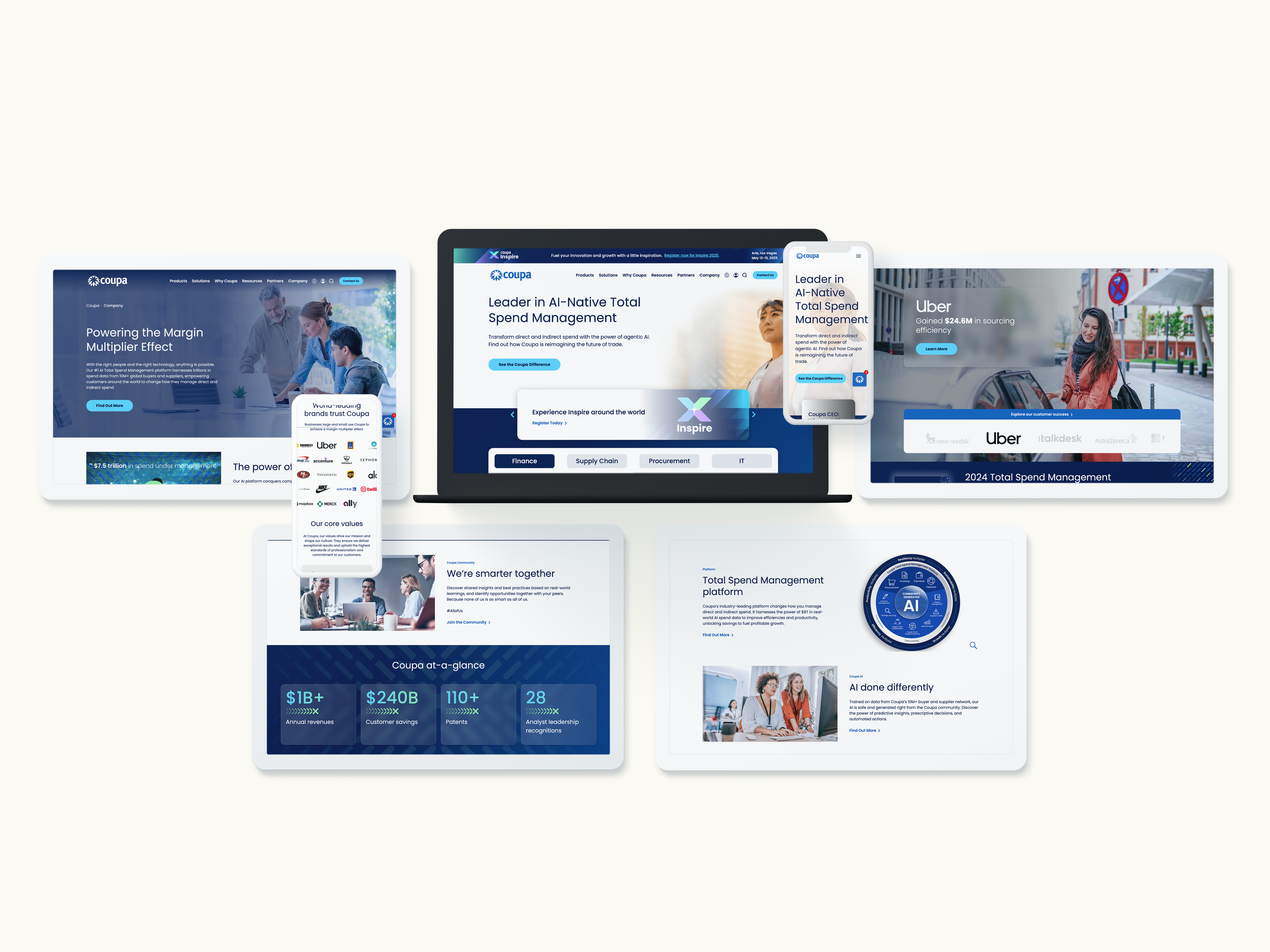
What B2B Marketers Should Be Doing Now
With the sunset of cookies no longer hypothetical, proactive planning is essential. Here are the immediate steps B2B teams should take:
- Audit your current martech stack to understand where third-party cookies are being used (from ad targeting to analytics).
- Enhance your first-party data strategy by refining lead capture forms, improving CRM hygiene, and investing in customer data platforms (CDPs).
- Test contextual and native campaigns now to build experience with post-cookie tactics.
- Explore identity solutions with your media partners and vendors to determine what options make sense for your business.
- Revisit attribution models and prepare to rely more heavily on direct engagement metrics and source-based lead reporting.
The End of Cookies Is the Start of Better Marketing
The transition away from third-party cookies is less a threat and more an opportunity—an opportunity to build deeper relationships, center strategy around consent and value, and create more resilient marketing ecosystems.
For B2B marketers, this is the time to get ahead. Waiting until third-party cookies are fully deprecated means playing catch-up in a game already in motion. The brands that win in this next phase won’t be the ones that cling to old tactics—they’ll be the ones that adapt, test, and evolve.
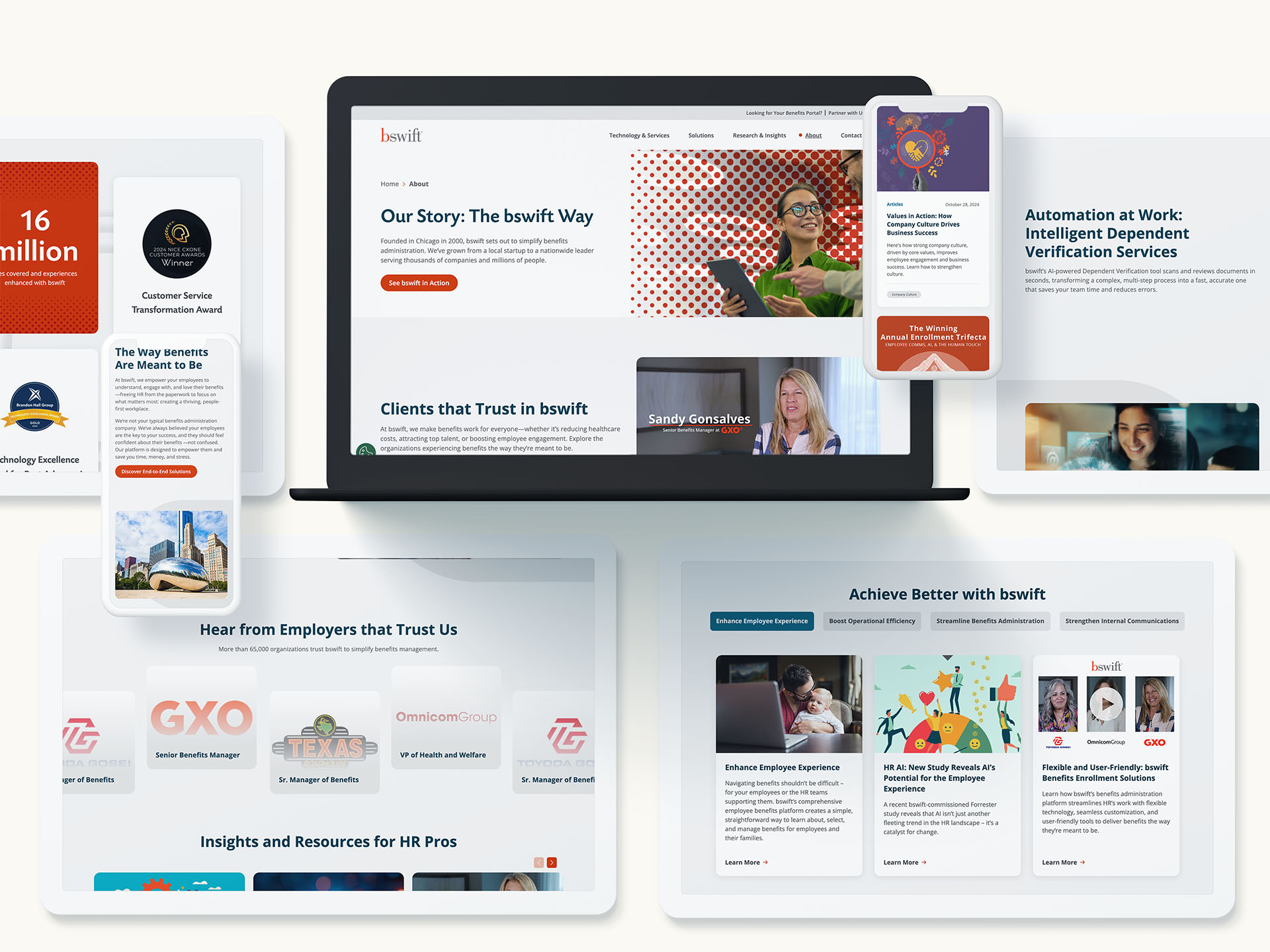
Need Help Navigating the Post-Cookie Future?
Bluetext helps B2B brands build smarter, privacy-first targeting strategies—from first-party data activation to media planning and messaging. If you’re ready to rethink your digital campaigns for the cookieless future, let’s talk.
As privacy regulations tighten, precision targeting becomes harder—here’s how to execute effective ABM without crossing data compliance lines.
The New Landscape of ABM and Data Privacy
Account-Based Marketing (ABM) has become a go-to strategy for B2B marketers aiming to deliver personalized, precise campaigns tailored to key accounts. The promise of ABM lies in its ability to engage decision-makers with highly relevant messaging and tightly focused tactics.
However, the growing wave of data privacy regulations—including GDPR in Europe, CCPA and CPRA in California, and others worldwide—is reshaping how marketers can collect, use, and share data. These laws, designed to protect consumer and business privacy, have introduced new challenges for ABM’s reliance on granular data.
In this evolving landscape, the question emerges: How can marketers maintain ABM’s effectiveness while staying fully compliant and respecting privacy? This post explores practical strategies and privacy-friendly approaches to ensure your ABM campaigns continue to deliver results without crossing data compliance lines.
The Impact of Privacy Regulations on ABM
Privacy laws place clear limits on collecting personal data without consent, restricting marketers from using many traditional data sources that ABM once depended on. The decline of third-party cookies, limitations on tracking across devices, and increased user control over data permissions have diminished marketers’ visibility into customer behaviors.
These changes affect ABM in several ways:
- Reduced access to behavioral and intent data from third-party platforms.
- Challenges in tracking individual contacts across multiple touchpoints.
- Necessity to obtain explicit consent before processing certain types of personal data.
Traditional hyper-targeted ads and behavioral retargeting tactics must be reevaluated to comply with these new realities.

Rethinking ABM Strategy for Privacy Compliance
The key to privacy-safe ABM is shifting focus towards first-party data—information collected directly from your audience through interactions they initiate and consent to.
Here are some foundational shifts marketers should make:
- Build trusted data sources: Prioritize collecting data through website forms, gated content, webinars, and events where consent is explicit.
- Consent-based marketing: Ensure all communications are compliant with opt-in and opt-out requirements.
- Quality over quantity: Instead of mass data collection, deepen insights on fewer, high-value accounts with verified data.
- Ethical standards: Embed privacy considerations into your marketing ethos to strengthen trust and brand reputation.
Privacy-Friendly Tactics to Power Effective ABM
1. Intent and Contextual Data Usage
While granular personal data becomes scarcer, marketers can harness intent signals and contextual information that do not rely on invasive tracking. For example, analyzing content engagement patterns on your site or leveraging CRM activity can provide rich insights into account interest without crossing privacy lines.
2. Enhanced CRM and CDP Integration
Customer Data Platforms (CDPs) that consolidate and manage first-party data become critical tools. They enable you to securely unify account information, track engagement consent, and enrich profiles based on direct interactions, such as demo requests or content downloads.
3. Account-Based Personalization Without Personal Data Overreach
Use firmographic data—company size, industry, location—and expressed interests to create personalized experiences. Dynamic content and A/B testing can be applied thoughtfully to tailor messaging without needing to overreach into sensitive personal data.
4. Collaboration with Legal and Compliance Teams
Privacy compliance should be a built-in component of ABM campaigns, not an afterthought. Work closely with legal and compliance experts during campaign design and maintain thorough documentation and audits to ensure ongoing adherence to regulations.

Tools and Technologies Supporting Privacy-Conscious ABM
Technology plays a pivotal role in enabling privacy-first ABM. Consider integrating:
- Privacy-first CDPs: Platforms that prioritize consent management and data security.
- Cookieless tracking solutions: Emerging tools designed to measure campaign performance without relying on third-party cookies.
- Consent management platforms (CMPs): Systems that streamline opt-in/opt-out processes and keep audit trails.
Evaluate your technology stack with privacy compliance as a core criterion to avoid risks and foster trust.
Getting Started: Implementing Privacy-Safe ABM Today
Begin your transition to privacy-conscious ABM by:
- Auditing current data collection and campaign practices for compliance gaps.
- Developing a phased roadmap to emphasize first-party data and consent.
- Training marketing and sales teams on privacy regulations and ethical marketing.
- Partnering with agencies and vendors skilled in navigating privacy requirements and agile ABM strategies.
Small, deliberate steps can help your organization adapt without disrupting momentum.
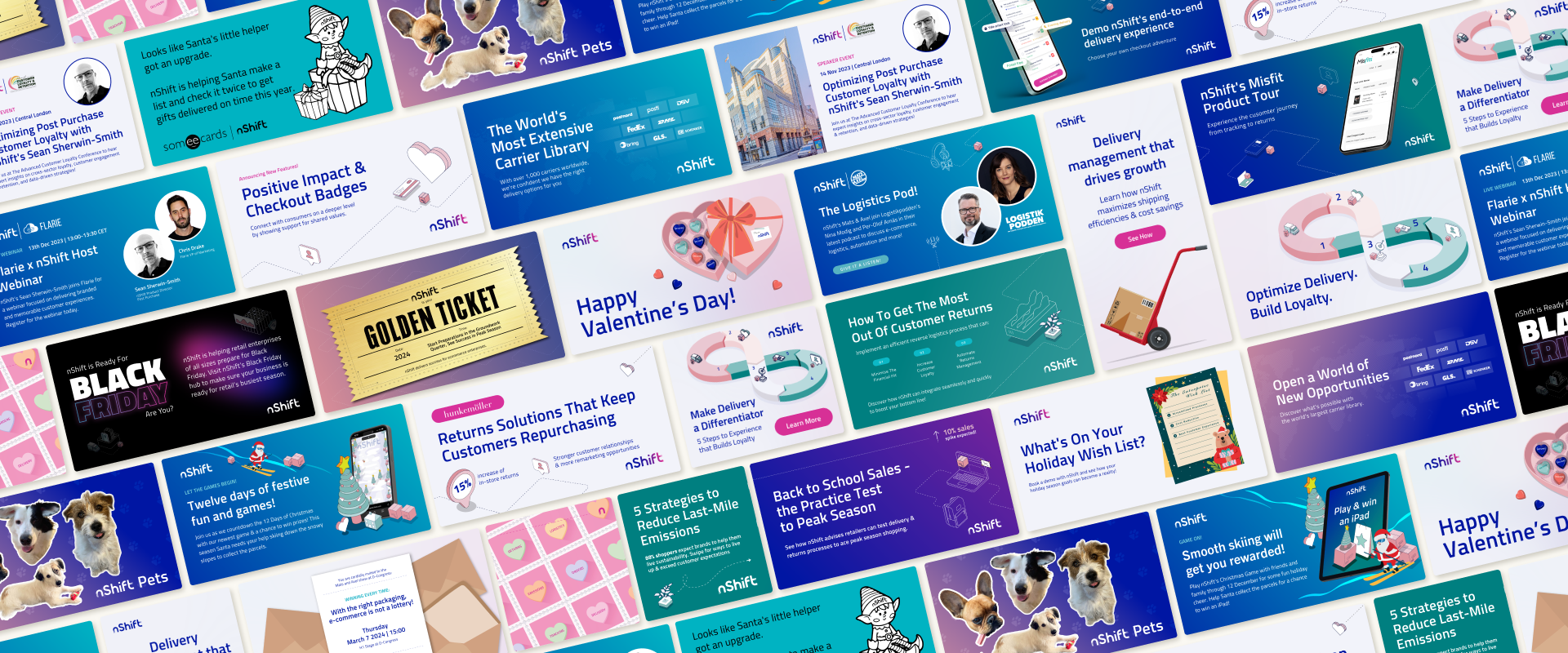
Navigating ABM Success in a Privacy-First World
Privacy regulations are not a passing trend—they represent a fundamental shift in how businesses must approach marketing. ABM remains a powerful strategy, but success now depends on transparency, respect for data, and innovative targeting methods that comply with evolving laws.
By embedding privacy as a core brand value, you not only avoid legal pitfalls but also build deeper trust with your prospects and customers, strengthening long-term relationships.
Ready to navigate ABM in the age of data privacy? Contact Bluetext to develop compliant, effective account-based strategies that drive results while respecting privacy.
When most marketers think of SMS, they picture retail alerts, flash sales, or appointment reminders—tactics firmly planted in the B2C world. But dismissing SMS as irrelevant for B2B is a missed opportunity. In reality, text messaging can be one of the most direct, high-impact tools in your B2B marketing arsenal—if you know when and how to use it.
In an era where inboxes are overloaded and attention spans are shrinking, SMS offers a rare advantage: it gets read. Studies show SMS open rates hover around 98%, and response rates can be as high as 45%. For comparison, email sits around 20% and 6%, respectively. That’s a significant gap—and one B2B marketers can no longer afford to ignore.
Why SMS Is Overlooked in B2B (and Why That’s Changing)
Historically, SMS has been seen as too casual or invasive for the B2B space. Enterprise buyers aren’t browsing for deals via text—they’re making complex, considered decisions. But the idea that professional communication has to be long-form or confined to email is quickly becoming outdated.
As the lines between work and personal life continue to blur, decision-makers are relying more on mobile to stay productive. That means a well-timed, relevant SMS can cut through the noise—especially when it’s part of a thoughtful, omnichannel approach.
Compliance concerns have also contributed to hesitation around SMS, but platforms have evolved. Today’s SMS tools for B2B are built to meet regulatory standards, offering opt-in workflows, tracking, and integrations with your existing CRM.
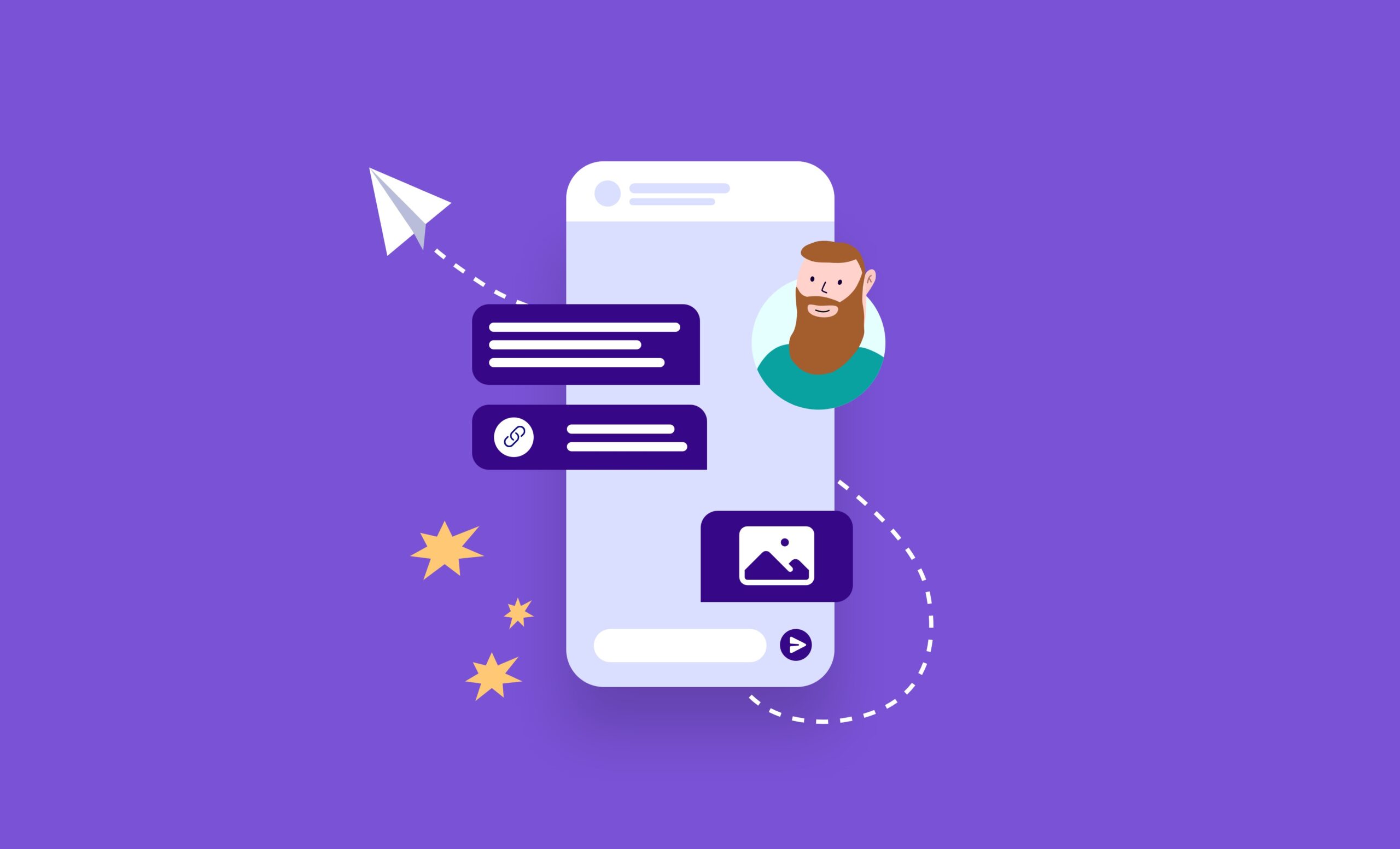
When SMS Makes Sense in B2B Campaigns
The key to effective B2B SMS marketing is knowing when to use it—and when to hold back. SMS isn’t a channel for every message. But in the right context, it can serve as the perfect nudge.
Here are some strategic use cases:
- High-intent lead follow-up: A quick text to confirm a meeting or thank a prospect for attending a demo can accelerate the sales cycle.
- Event and webinar reminders: SMS ensures higher attendance rates with last-minute nudges, especially for executive-level registrants.
- Account-based marketing (ABM) touchpoints: Personalized messages to high-value accounts help reinforce relationships and drive action.
- Urgent alerts or updates: Whether it’s a product release or contract deadline, time-sensitive information is better received via text than email.
- Post-sale engagement: For customer success teams, SMS can be a valuable tool for onboarding, check-ins, or renewal reminders.
How to Use SMS in B2B the Right Way
Just because you can text your prospects doesn’t mean you should do it without a plan. B2B SMS marketing works best when it’s strategic, respectful, and fully integrated into your broader campaigns.
Here’s how to get it right:
- Obtain explicit consent: Always use opt-in forms and make it easy to opt out. Respect for privacy builds trust.
- Keep it short and useful: SMS isn’t the place for fluff. Messages should be concise, relevant, and action-oriented.
- Personalize your outreach: Use first names, company names, or reference a specific meeting or download to show it’s not a generic blast.
- Integrate with your tech stack: Connect your SMS tool to your CRM and marketing automation platforms to sync messages, track performance, and trigger texts based on user behavior.
- Test and optimize: Run A/B tests on timing, copy, and CTA to learn what resonates—and avoid message fatigue.

SMS as Part of an Omnichannel B2B Strategy
The real power of SMS lies in how it supports and enhances your existing marketing channels. Think of it as the connective tissue between your emails, digital ads, webinars, and sales outreach.
For example:
- Follow up a gated content download with an email, then a personalized text offering a meeting.
- Send an SMS reminder the day before a webinar, with the Zoom link included.
- After a conference, send a thank-you text from the sales rep who spoke with the lead, offering a quick call.
When done right, SMS doesn’t disrupt the buyer journey—it smooths it out.
The Takeaway
SMS is no longer just for B2C brands or retail promotions. In today’s mobile-first world, B2B buyers are just as reachable via text—and often more responsive. The key is using SMS intentionally, at high-value moments, and as part of a cohesive omnichannel strategy.
Whether you’re nurturing leads, boosting event attendance, or keeping key accounts engaged, SMS offers a direct, powerful line of communication that few other channels can match.
Ready to elevate your B2B marketing strategy with SMS?
Let’s build a smarter, more connected campaign—contact Bluetext today to get started.
B2B websites are content powerhouses. Whether you’re navigating technical product documentation, compliance resources, white papers, or thought leadership blogs, these sites are often packed with deeply layered and jargon-heavy material. But no matter how rich your content is, it’s only valuable if users can find it. That’s where smart search functionality becomes essential.
In today’s digital landscape, B2B brands must move beyond basic keyword search to deliver an intuitive, efficient, and tailored experience that unlocks the full potential of their content. In this post, we’ll explore what smart search means for complex B2B websites and how you can use it to enhance discoverability, user experience, and business outcomes.
The Challenge of B2B Content Complexity
B2B websites tend to grow organically over time. As new products, services, use cases, and regulations emerge, pages are added—often in silos. This creates sprawling ecosystems of technical data, fragmented resources, and inconsistent metadata. For users, it can feel like searching for a needle in a haystack.
Traditional navigation tools, including outdated search bars or simplistic site maps, often fall short in helping visitors find what they need. Whether it’s a government RFP looking for product certifications or a hospital IT team seeking integration specs, your users expect fast, accurate answers. When they don’t get them, they leave.
What Is Smart Search?
Smart search—also known as advanced site search—goes far beyond the basic keyword match. It leverages technologies like artificial intelligence (AI), natural language processing (NLP), and machine learning to understand user intent and deliver relevant results.
Key capabilities of smart search include:
- Predictive search suggestions
- Typo tolerance and fuzzy matching
- Semantic understanding of queries
- Filters and faceted navigation
- Personalized results based on behavior or user roles
- Analytics dashboards to track search behavior
Popular platforms like Elasticsearch, Algolia, and Azure Cognitive Search offer these features out of the box, and many integrate seamlessly with content management systems (CMS), customer relationship management (CRM) platforms, and digital asset management (DAM) tools.
Why Smart Search Matters for B2B Sites
A smart search function does more than improve user experience—it adds measurable business value.
1. Increases Content Discoverability
Smart search enables users to easily surface relevant product pages, PDFs, datasheets, blog posts, and more—regardless of how deep they’re buried.
2. Boosts Engagement and Conversions
The faster users find what they’re looking for, the more likely they are to take action—whether that’s submitting a lead form, starting a trial, or contacting sales.
3. Provides Insight into User Needs
Site search data reveals what visitors are trying to find. This intel can drive content strategy, identify gaps, and inform UX decisions.
4. Supports Role-Based Customization
By understanding who the user is (e.g., buyer, engineer, compliance officer), smart search can tailor results to deliver the most relevant answers for each audience segment.
Key Features to Include in Your Smart Search Implementation
To maximize the impact of your search functionality, prioritize features that enhance usability and scale with your content ecosystem:
- Auto-complete and dynamic suggestions
- Faceted search filters (e.g., by product type, industry, resource type)
- Support for long-tail and natural language queries
- Contextual search snippets that preview content
- Synonym recognition and custom dictionaries
- Integration with structured metadata and tagging systems
Don’t forget to optimize for mobile—B2B users increasingly access websites from smartphones and tablets, especially in the field.
Implementation Tips for Complex Sites
Building smart search into a complex B2B website requires careful planning:
- Audit your existing content to ensure it’s structured, tagged, and organized for machine readability
- Map common user journeys to understand how different personas navigate the site
- Define your taxonomy and metadata strategy to ensure consistent tagging and filtering
- Monitor and refine search performance using analytics and feedback loops
- Collaborate across departments (marketing, IT, sales) to align on priorities and content visibility
Smart Search in Action: A Real-World Snapshot
Imagine a defense technology firm with a site housing hundreds of technical briefs, compliance documents, and product brochures. With basic keyword search, users must already know the exact title or term to find a document. But with smart search, a procurement officer typing “NIST certification for satellite hardware” can instantly access relevant materials—even if the original file is titled differently. Filters allow narrowing by document type, date, or business unit, ensuring a streamlined path to the right asset.
Turn Your Website into a Smart Content Hub
If your B2B site is packed with valuable content that users can’t easily find, it’s time to upgrade your search experience. At Bluetext, we help organizations architect advanced search solutions that integrate seamlessly into complex digital ecosystems—enhancing usability, supporting business goals, and delivering measurable ROI.
Let’s talk about how Bluetext can help you implement smart search for your site. Contact us today.
In the ever-evolving world of marketing, where authenticity and trust drive engagement, employee advocacy has emerged as a powerful strategy to amplify brand messaging. Employee advocacy—the promotion of an organization by its workforce through personal networks—is not just a buzzword. It’s a cornerstone for brands aiming to build trust, boost engagement, and expand their reach in today’s digital age. As we head into 2025, it’s time to ask: Is your business tapping into its most valuable marketing asset—your employees?
The Power of Employee Advocacy in Modern Marketing
The essence of employee advocacy lies in leveraging the voices of your employees to promote your brand’s mission, products, or services. While corporate accounts are often viewed as polished and carefully curated, messages from employees tend to feel more genuine and relatable. Studies show that people are three times more likely to trust information shared by employees than by a company’s official channels.
But why is this strategy gaining traction now? The answer lies in two key trends:
- The Rise of Authenticity: In a world inundated with branded content, authenticity is the currency that builds trust. Messages shared by employees are perceived as more authentic and less “salesy.”
- The Power of Social Networks: Employees collectively have social networks that far exceed the reach of a brand’s corporate accounts. Tapping into these networks can exponentially expand your brand’s visibility.
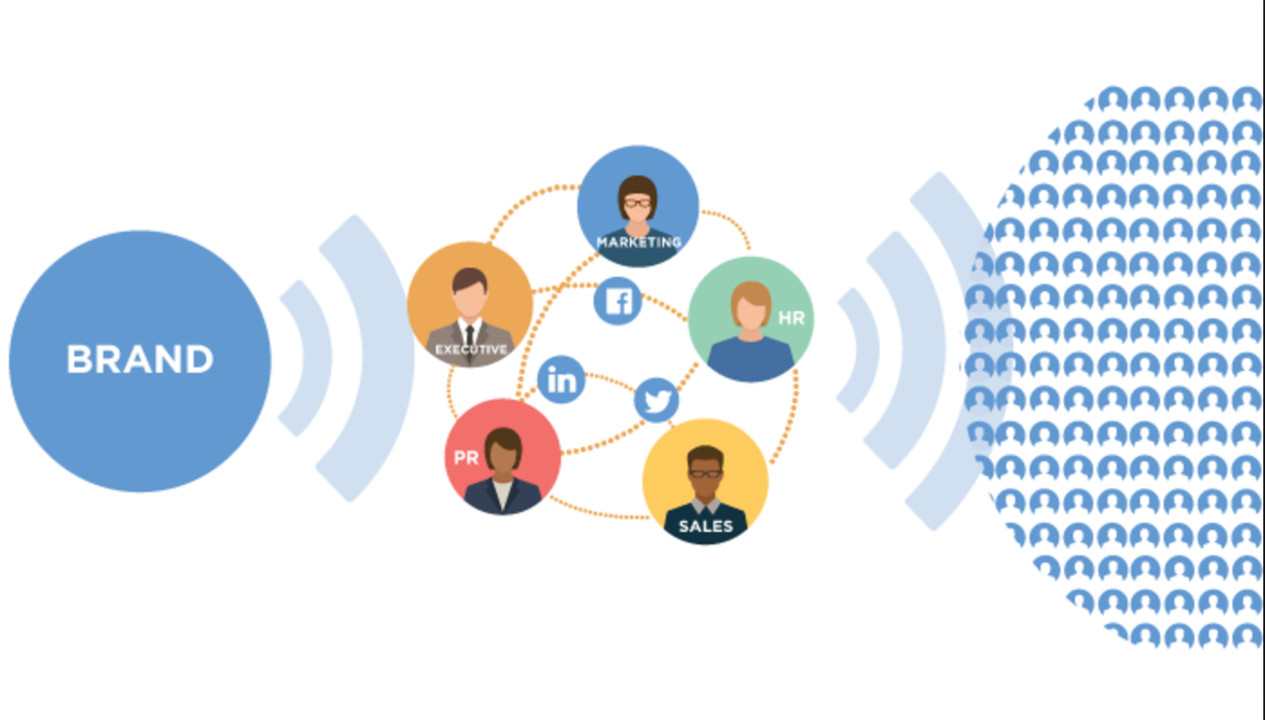
Benefits of Employee Advocacy
Implementing an employee advocacy program can have far-reaching benefits for your organization. Here are the key advantages:
1. Increased Brand Reach
Your employees’ personal networks—spanning LinkedIn, Twitter, and other platforms—can significantly amplify your brand’s visibility. A single employee sharing a post can reach hundreds or thousands of connections who may otherwise never interact with your corporate accounts.
2. Enhanced Trust and Credibility
People trust people, not logos. By empowering your employees to share their experiences and perspectives, you humanize your brand and build trust with your audience.
3. Boosted Employee Engagement
An employee advocacy program fosters a sense of ownership and pride in the organization. When employees feel valued and involved in the company’s mission, they are more likely to be engaged and motivated.
4. Improved Recruitment Efforts
Employees who share positive stories about your company can become powerful recruiters. Potential candidates are more likely to consider a company when they see authentic endorsements from current employees.
5. Cost-Effective Marketing
Compared to traditional advertising, employee advocacy offers an organic and cost-effective way to increase brand awareness and engagement.
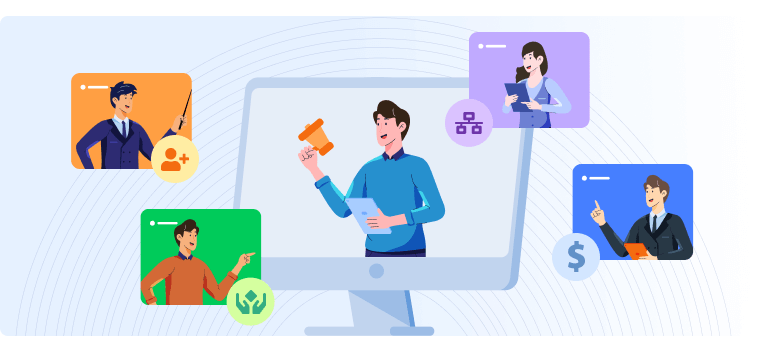
How to Build an Employee Advocacy Program
Creating a successful employee advocacy program requires thoughtful planning and execution. Here’s a step-by-step guide:
1. Set Clear Objectives
Define what you want to achieve through employee advocacy. Are you looking to boost brand awareness, drive traffic to your website, or increase engagement on social media? Clear goals will guide your program’s strategy and measurement.
2. Choose the Right Platform
Consider using employee advocacy tools like Hootsuite Amplify or Bambu to streamline content sharing and track performance. These platforms make it easy for employees to access approved content and share it with their networks.
3. Create Shareable Content
The success of your advocacy program hinges on the quality of your content. Provide employees with engaging, shareable content that aligns with their personal interests and professional goals.
4. Provide Training and Guidelines
Offer training sessions to help employees understand the value of advocacy and how to effectively share content. Provide clear guidelines to ensure brand messaging remains consistent.
5. Incentivize Participation
Recognition and rewards can motivate employees to participate in your advocacy program. Consider offering incentives such as gift cards, extra vacation days, or public acknowledgment for top advocates.
6. Measure and Optimize
Use analytics to track the performance of your advocacy efforts. Monitor metrics such as reach, engagement, and website traffic to refine your strategy and maximize results.

Overcoming Common Challenges
While the benefits of employee advocacy are clear, organizations may encounter challenges during implementation. Here’s how to address them:
- Low Participation Rates: Start small by engaging a core group of advocates and building momentum over time.
- Inconsistent Messaging: Provide pre-approved content and clear guidelines to ensure consistency.
- Lack of Measurement: Use analytics tools to measure performance and demonstrate the program’s ROI to stakeholders.
Why 2025 is the Year for Employee Advocacy
As digital marketing becomes increasingly competitive, brands must find innovative ways to stand out. Employee advocacy offers a unique blend of authenticity, reach, and cost-effectiveness that aligns with the needs of modern marketing. By empowering your employees to be your brand’s biggest champions, you can drive meaningful engagement and achieve your business objectives.
Take the First Step
Ready to unlock the power of employee advocacy? Contact Bluetext today to learn how we can help you build a successful program tailored to your organization’s needs. Let’s make 2025 the year your employees become your brand’s greatest advocates.
As the marketing landscape continues to evolve at a rapid pace, staying ahead of the curve is essential for B2B brands looking to remain competitive. The year 2025 promises a wave of transformative trends that will reshape how businesses connect with their audiences. From AI-driven strategies to immersive technologies, these innovations offer unprecedented opportunities to build stronger relationships, enhance personalization, and drive measurable results.
AI-Driven Personalization at Scale
Artificial intelligence (AI) is no longer just a buzzword; it has become a foundational tool for delivering hyper-personalized experiences at scale. In 2025, B2B brands will increasingly rely on AI to analyze data, predict customer behavior, and tailor content to individual preferences. Tools like AI-powered chatbots and recommendation engines are set to enhance user engagement by providing real-time, context-aware interactions. AI also enables predictive analytics, allowing marketers to anticipate client needs and craft strategies that align with their buying journeys. Companies that embrace AI-driven personalization will not only enhance customer satisfaction but also improve conversion rates and ROI.

Immersive Technologies Transforming Engagement
Immersive technologies such as augmented reality (AR), virtual reality (VR), and mixed reality (MR) are revolutionizing how B2B marketers engage with their audiences. These tools enable brands to create interactive experiences that bring their products and services to life. Imagine offering a virtual walkthrough of a manufacturing facility or an AR-powered demonstration of complex software. These experiences not only captivate audiences but also provide a deeper understanding of offerings, making them more compelling and memorable. As hardware becomes more accessible and platforms for immersive content expand, B2B companies have a unique opportunity to differentiate themselves by leveraging these technologies.
Sustainability and Ethical Marketing
In an era where consumers and businesses alike are prioritizing sustainability, B2B brands must align their marketing efforts with eco-conscious values. Highlighting sustainable practices and ethical operations is no longer optional—it’s a business imperative. Companies that authentically communicate their commitment to environmental, social, and governance (ESG) principles will earn trust and loyalty from their partners and clients. This trend extends beyond messaging to operational changes, such as reducing carbon footprints and implementing circular economy practices. Authenticity is key; businesses must ensure their actions align with their words to avoid accusations of greenwashing.
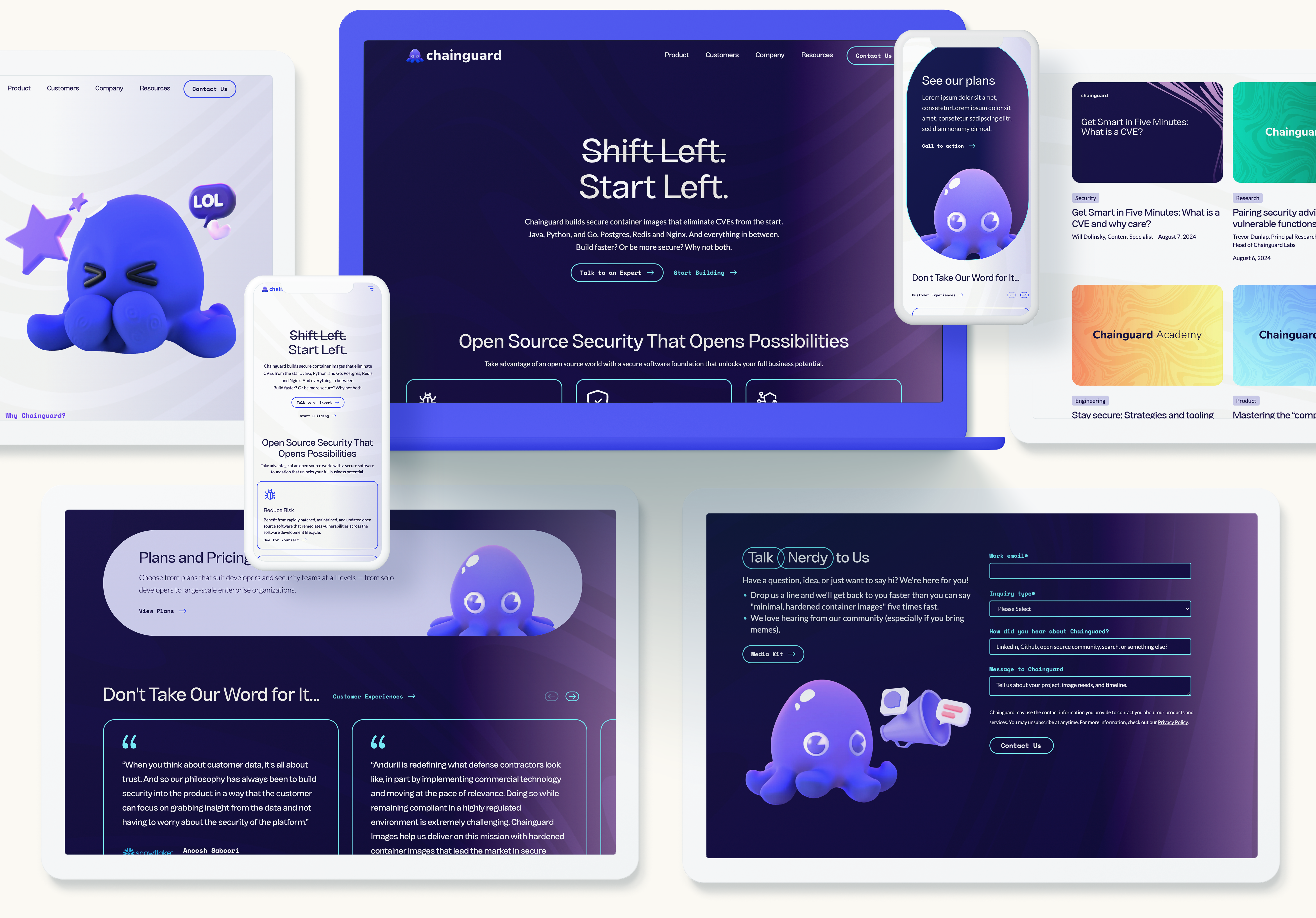

The Rise of First-Party Data Strategies
With increasing privacy regulations and the phasing out of third-party cookies, first-party data has become a cornerstone of effective marketing. In 2025, B2B marketers will focus on building robust data collection strategies through direct interactions with their audiences. Tools like gated content, webinars, and personalized email campaigns are instrumental in gathering valuable insights while respecting user privacy. Leveraging this data allows companies to create targeted campaigns that resonate deeply with their audience. Additionally, investing in data management platforms (DMPs) and customer data platforms (CDPs) ensures that insights are actionable and integrated across marketing channels.
Omnichannel Customer Experiences
Today’s B2B buyers expect seamless experiences across multiple touchpoints, and this trend will only intensify in 2025. Omnichannel marketing strategies integrate online and offline interactions to create a cohesive journey for customers. For example, a prospect might discover a product through a LinkedIn ad, attend a virtual event for more details, and finalize a purchase after an in-person meeting. Ensuring consistency in messaging, branding, and experience across channels is crucial to building trust and driving conversions. Technology like marketing automation platforms and CRM systems plays a vital role in orchestrating these efforts and ensuring data continuity.


Social Media’s Expanding Role
Social media platforms are no longer just tools for brand awareness; they are becoming integral to the entire B2B sales funnel. In 2025, platforms like LinkedIn, Twitter, and emerging niche networks will see increased use for thought leadership, lead generation, and community engagement. Short-form video content, live streams, and interactive posts will dominate as companies seek to capture attention in crowded digital spaces. Social listening tools will also become more sophisticated, enabling brands to monitor trends, gather insights, and proactively address audience needs. By leveraging social media strategically, B2B marketers can strengthen relationships and drive measurable outcomes.
Preparing for the Future
The marketing trends of 2025 represent a blend of technological innovation, evolving consumer expectations, and heightened emphasis on ethical practices. B2B brands that proactively adapt to these shifts will be well-positioned to achieve success in an increasingly competitive landscape. Whether it’s leveraging AI for personalization, adopting immersive technologies, or embracing sustainability, staying ahead requires both agility and a forward-thinking mindset. Ready to future-proof your marketing strategy? Contact Bluetext today to explore how we can help you navigate the trends shaping the future of B2B marketing.
For professional services firms, content marketing plays a pivotal role in establishing authority and building trust with B2B clients. In an industry where expertise is the ultimate currency, delivering valuable, targeted content can set firms apart and drive meaningful engagement.
The Role of Content Marketing in Professional Services
Professional services firms thrive on credibility and trust. Unlike product-based businesses, their value lies in intangible offerings such as expertise, insights, and tailored solutions. Content marketing provides a powerful avenue to showcase these strengths while addressing the unique challenges of B2B buyers:
- Educating Decision-Makers: B2B buyers in professional services often require in-depth understanding before making purchasing decisions. Content such as white papers, blogs, and webinars can provide the knowledge they need to move forward with confidence.
- Demonstrating Expertise: Thought leadership content, such as industry analyses or expert opinions, helps position firms as authorities in their field.
- Building Trust Over Time: Consistent, high-quality content fosters familiarity and reliability, which are key to winning long-term engagements.
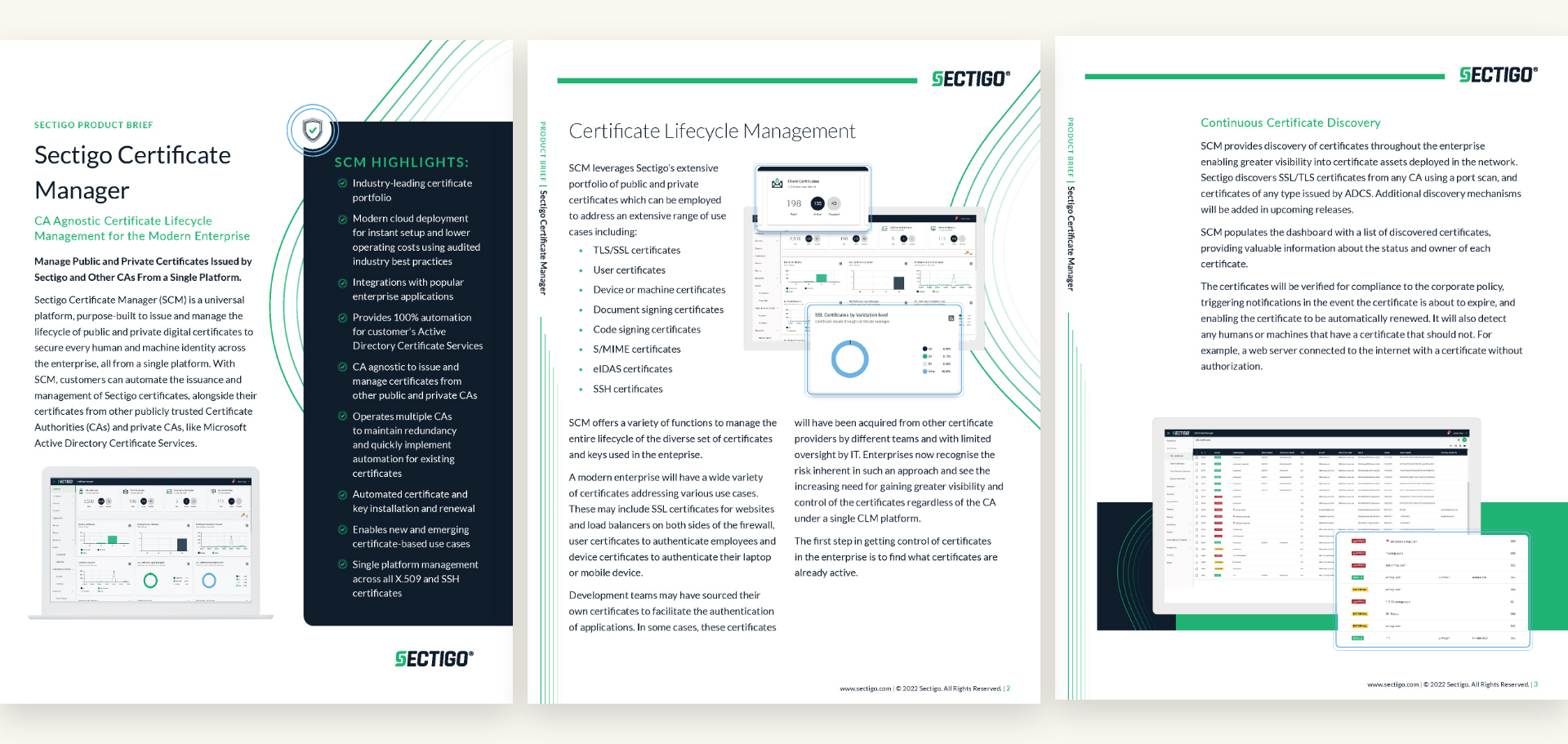

Key Content Marketing Strategies for Professional Services Firms
- Develop a Thought Leadership Program
Thought leadership is a cornerstone of content marketing for professional services. By sharing unique perspectives and innovative ideas, firms can:
- Demonstrate industry expertise and forward-thinking approaches.
- Build credibility with target audiences and differentiate themselves from competitors.
How to Execute:
- Create a steady stream of thought-provoking articles, white papers, and reports.
- Participate in podcasts, webinars, and industry panels to amplify your voice.
- Share proprietary research or data to provide exclusive insights.
- Prioritize Client-Centric Content
B2B clients seek solutions tailored to their specific pain points. Crafting content that addresses these needs directly can:
- Showcase your understanding of industry challenges.
- Offer actionable advice that resonates with decision-makers.
How to Execute:
- Develop case studies that illustrate your success in solving client challenges.
- Write blogs or guides that answer common client questions.
- Segment your content by industry, business size, or role to ensure relevance.
- Leverage Multiple Content Formats
Different clients consume content in different ways. Diversifying your content formats ensures you reach your audience effectively. Consider:
- Blogs and articles for quick insights.
- Video explainers or tutorials for visual learners.
- Webinars or workshops for in-depth discussions.
How to Execute:
- Use a mix of written, visual, and interactive content to cater to varied preferences.
- Repurpose existing content into new formats, such as turning a white paper into an infographic or a series of blog posts.
- Harness the Power of SEO
Search engine optimization (SEO) ensures your content reaches your audience at the right time. Optimized content drives visibility and attracts qualified leads.
How to Execute:
- Conduct keyword research to identify the terms your audience is searching for.
- Optimize headlines, meta descriptions, and content for search engines.
- Build a library of evergreen content that remains relevant over time.
- Nurture Relationships Through Email Marketing
Email marketing is a powerful tool for engaging prospects and nurturing existing client relationships. By delivering targeted, valuable content directly to their inbox, you can:
- Keep your firm top of mind.
- Provide consistent value over the course of the buyer’s journey.
How to Execute:
- Develop segmented email campaigns tailored to different stages of the sales funnel.
- Share exclusive content, such as industry reports or invitations to events.
- Use analytics to refine your approach based on open and click-through rates.


Measuring the Impact of Your Content Marketing Efforts
To ensure your content marketing strategies are effective, it’s essential to track performance and refine your approach. Key metrics to monitor include:
- Engagement Metrics: Track page views, time on site, and shares to gauge content resonance.
- Lead Generation: Measure the number of qualified leads generated through content-driven efforts.
- Conversion Rates: Assess how effectively content drives prospects to take desired actions.
- Client Feedback: Solicit feedback on the value of your content to understand its impact on decision-making.
Final Thoughts: Building Authority Through Content
In the competitive landscape of professional services, content marketing is not just an add-on; it’s a necessity. By delivering valuable, client-focused content, firms can establish themselves as trusted advisors, differentiate from competitors, and drive long-term success.
Partner with Bluetext for Content Marketing Success
At Bluetext, we specialize in crafting content marketing strategies that help professional services firms showcase their expertise and connect with B2B clients. Contact us today to learn how we can elevate your content efforts and drive measurable results.
Scaling a SaaS company from startup to enterprise is no small feat. While landing the first 100 clients is a significant milestone, the strategies that worked early on won’t necessarily sustain growth. As the customer base grows, marketing efforts must evolve to support scalability and segmentation. This blog explores how SaaS companies can transition their marketing strategies to thrive in their next phase of growth.
From Startup to Scale-Up: Evolving Your Marketing Mindset
The journey from startup to scale-up requires a fundamental shift in marketing strategy. In the early days, growth often relies on founder-led sales and grassroots efforts. But as the business matures, a more structured approach becomes essential.
Understanding the Shift
Scaling up means moving beyond ad hoc tactics to a professionalized marketing framework. The focus expands from simply acquiring customers to also retaining and growing their value over time.
Aligning Marketing with Growth Goals
Growth at scale demands a balanced approach:
- Acquisition: Attracting new customers through targeted campaigns.
- Retention: Ensuring existing clients stay engaged and loyal.
- Expansion: Upselling and cross-selling within the customer base to maximize lifetime value.
Building a Scalable Infrastructure
To enable this evolution, companies must invest in:
- Robust marketing automation tools.
- Data platforms for real-time insights.
- A talented team with expertise in segmentation, content, and demand generation.

Scaling Your SaaS Marketing Strategy
Once the infrastructure is in place, scaling marketing requires refining and expanding foundational tactics. Here are key areas to focus on:
1. Refine Your Value Proposition
As the company grows, so does its customer base—and with it, the diversity of customer needs. Tailor messaging to address specific pain points for different audience segments. For example, startups might prioritize cost-effectiveness, while enterprises may focus on security and scalability.
2. Segment Your Audience
Advanced segmentation enables personalized marketing efforts that resonate with diverse customer personas. Use data to group customers by:
- Industry or vertical.
- Company size.
- Product usage patterns.
- Stage in the customer lifecycle.
3. Expand Distribution Channels
Early-stage companies often rely on a few channels like paid search or organic social. Scaling up means diversifying into:
- Content marketing for thought leadership.
- Paid media campaigns for wider reach.
- ABM (Account-Based Marketing) strategies targeting high-value clients.
- Partnerships and co-marketing initiatives.
4. Automate and Optimize
Automation tools are critical for scaling campaigns efficiently. Automate workflows for:
- Lead nurturing.
- Email marketing.
- Social media scheduling and monitoring. Additionally, continuously test and optimize campaigns to ensure maximum ROI.
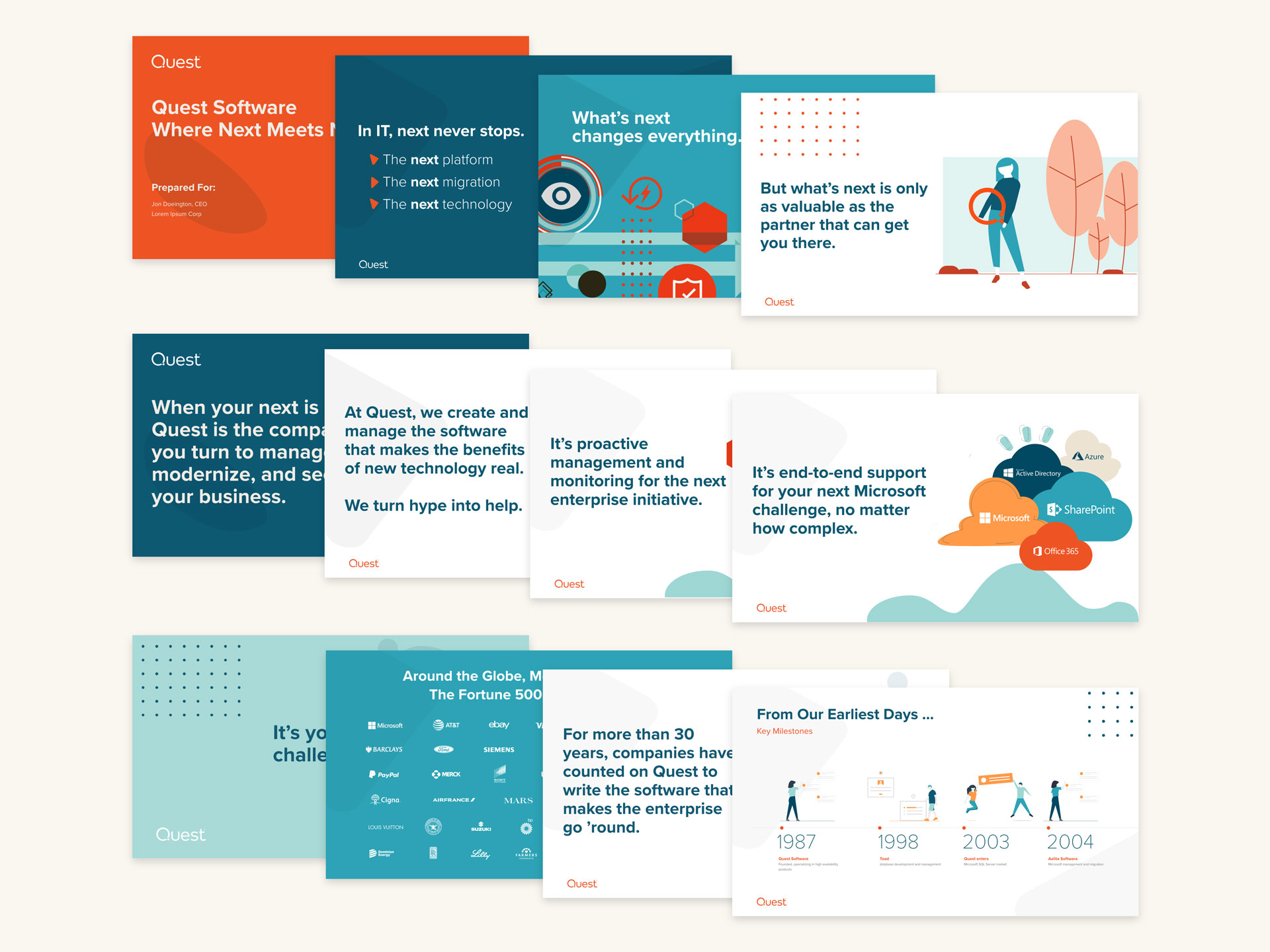
Advanced Segmentation: Targeting Clients at Scale
Effective segmentation is the backbone of scalable SaaS marketing. By leveraging customer data, companies can craft hyper-targeted campaigns that drive results.
The Role of Data
Customer insights are invaluable for understanding behavior and preferences. Use tools like CRM systems, analytics platforms, and surveys to gather actionable data.
Personalization at Scale
Modern buyers expect personalized experiences. Dynamic content and tailored outreach can help balance automation with the human touch.
Lifecycle Marketing
Adopt a lifecycle approach to ensure clients receive the right messaging at every stage:
- Acquisition: Highlight your unique value proposition.
- Onboarding: Simplify adoption with clear guides and proactive support.
- Upselling: Identify opportunities to promote premium features.
- Retention: Maintain engagement through value-driven communications.
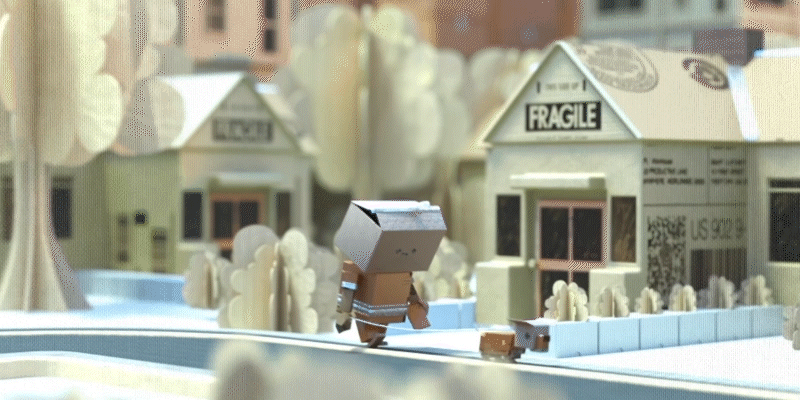
The Metrics That Matter: Measuring Growth Beyond the First 100 Clients
As marketing strategies evolve, so should the metrics used to measure success. Focus on these KPIs to gauge growth:
- Customer Acquisition Cost (CAC): Monitor how much you spend to acquire a new customer and ensure it’s sustainable as you scale.
- Customer Lifetime Value (CLV): Track the total revenue a customer brings over their lifecycle.
- Churn and Retention Rates: Keep a close eye on customer turnover to identify potential issues.
- Net Promoter Score (NPS): Measure customer satisfaction and likelihood to recommend your product.
By focusing on these metrics, SaaS companies can gain deeper insights into their performance and make data-driven decisions to fuel growth.
Preparing for Sustained Growth
Scaling a SaaS company’s marketing strategy requires more than just increasing spend; it demands a strategic shift. By refining value propositions, leveraging advanced segmentation, and investing in scalable infrastructure, companies can position themselves for long-term success.
The journey doesn’t end at the first 100 clients. With the right approach, SaaS businesses can not only sustain growth but thrive in an increasingly competitive market.
Navigating the complexities of B2B marketing can be challenging—especially when targeting multiple industries. Each sector has unique needs, preferences, and pain points that require nuanced approaches. A one-size-fits-all strategy simply doesn’t cut it in today’s competitive landscape. Instead, building a versatile marketing strategy that spans multiple sectors involves understanding the dynamics of each industry while maintaining a cohesive brand identity.
In this blog, we’ll explore actionable steps to create an effective cross-sector B2B marketing strategy, focusing on segmentation, adaptive messaging, and industry-specific tactics.
Understanding Cross-Sector Dynamics
When targeting multiple industries, it’s crucial to recognize both the commonalities and differences between them. For example:
- Commonalities: Many industries share concerns about ROI, cost-efficiency, and customer satisfaction.
- Differences: Industries like healthcare may prioritize compliance and patient outcomes, while manufacturing focuses on operational efficiency and supply chain management.
Recognizing these dynamics allows you to position your solutions effectively for each audience.
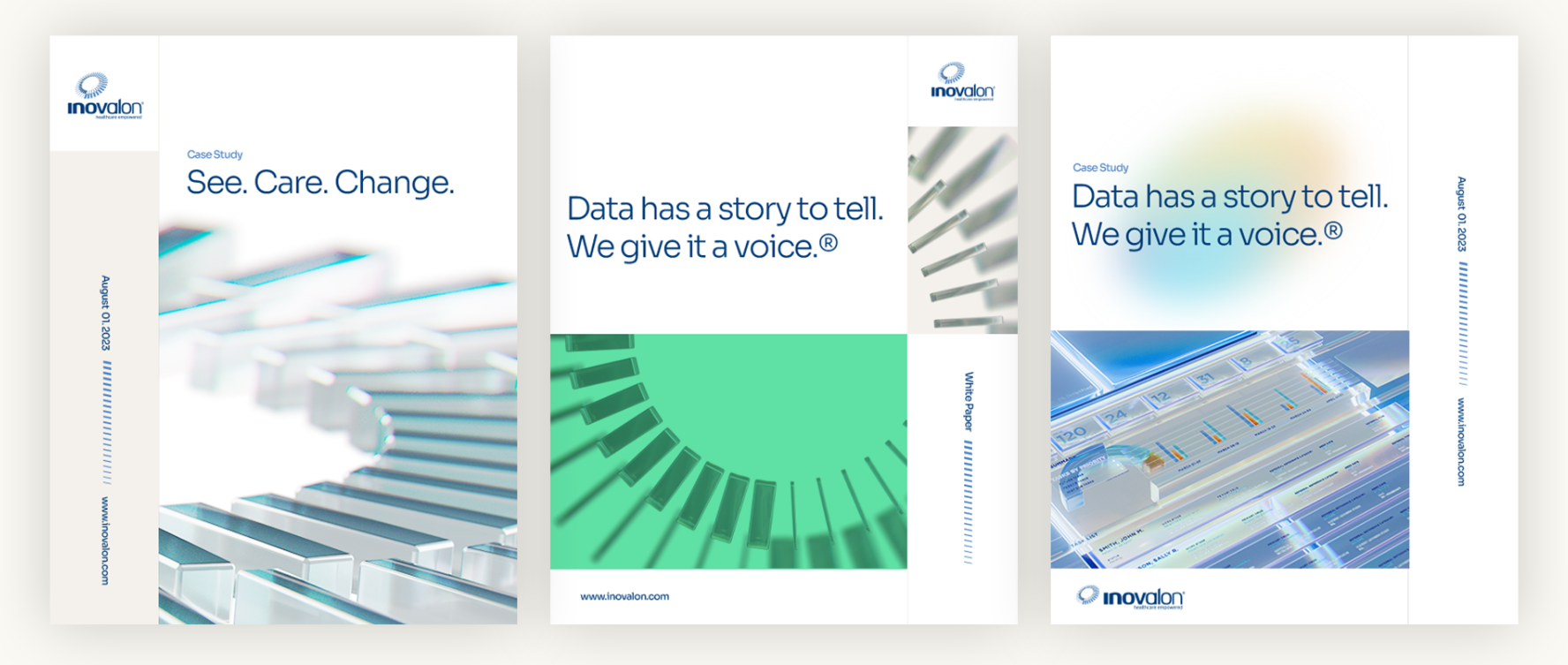

Developing a Robust Segmentation Framework
Segmentation is the foundation of any successful multi-sector strategy. Consider these steps:
- Segment by Industry: Use market research to identify the unique needs of each sector.
- Segment by Role: Tailor messages for decision-makers, influencers, and end-users.
- Use Data Analytics: Leverage CRM and marketing tools to uncover cross-industry patterns and customize your approach.
Crafting Adaptive Messaging Strategies
A strong brand identity should shine through all your messaging—but flexibility is key when addressing diverse sectors. Here’s how:
- Unified Brand Voice: Maintain consistency in tone and values across sectors.
- Tailored Content: Adapt case studies, whitepapers, and ad copy to highlight sector-specific benefits.
- Customer Personas: Develop profiles for typical decision-makers in each sector to align your messaging with their priorities.


Tactics for Multi-Sector Marketing Success
Successful campaigns require the right tools and tactics. Consider:
- Localization: Adapt messaging for different regions and markets.
- Omnichannel Marketing: Use digital platforms, events, and traditional media to reach varied audiences.
- Case Studies: Share examples that showcase your versatility across industries.
Measurement and Optimization Across Sectors
To ensure your strategy remains effective, establish KPIs for each sector and regularly evaluate performance. Examples include:
- Engagement Metrics: Open rates, click-through rates, and website traffic.
- Conversion Rates: Leads generated per campaign.
- Customer Feedback: Insights from surveys and reviews.



Your Path to Multi-Sector Success
Mastering multi-sector marketing is not just about flexibility—it’s about understanding the unique needs of each industry while maintaining a cohesive brand identity. By leveraging data, crafting tailored messaging, and staying attuned to audience behaviors, you can create strategies that resonate across diverse sectors.
Ready to take your B2B marketing strategy to the next level? Contact Bluetext today to learn how our expertise in multi-sector marketing can help your organization build a stronger, more adaptable presence.